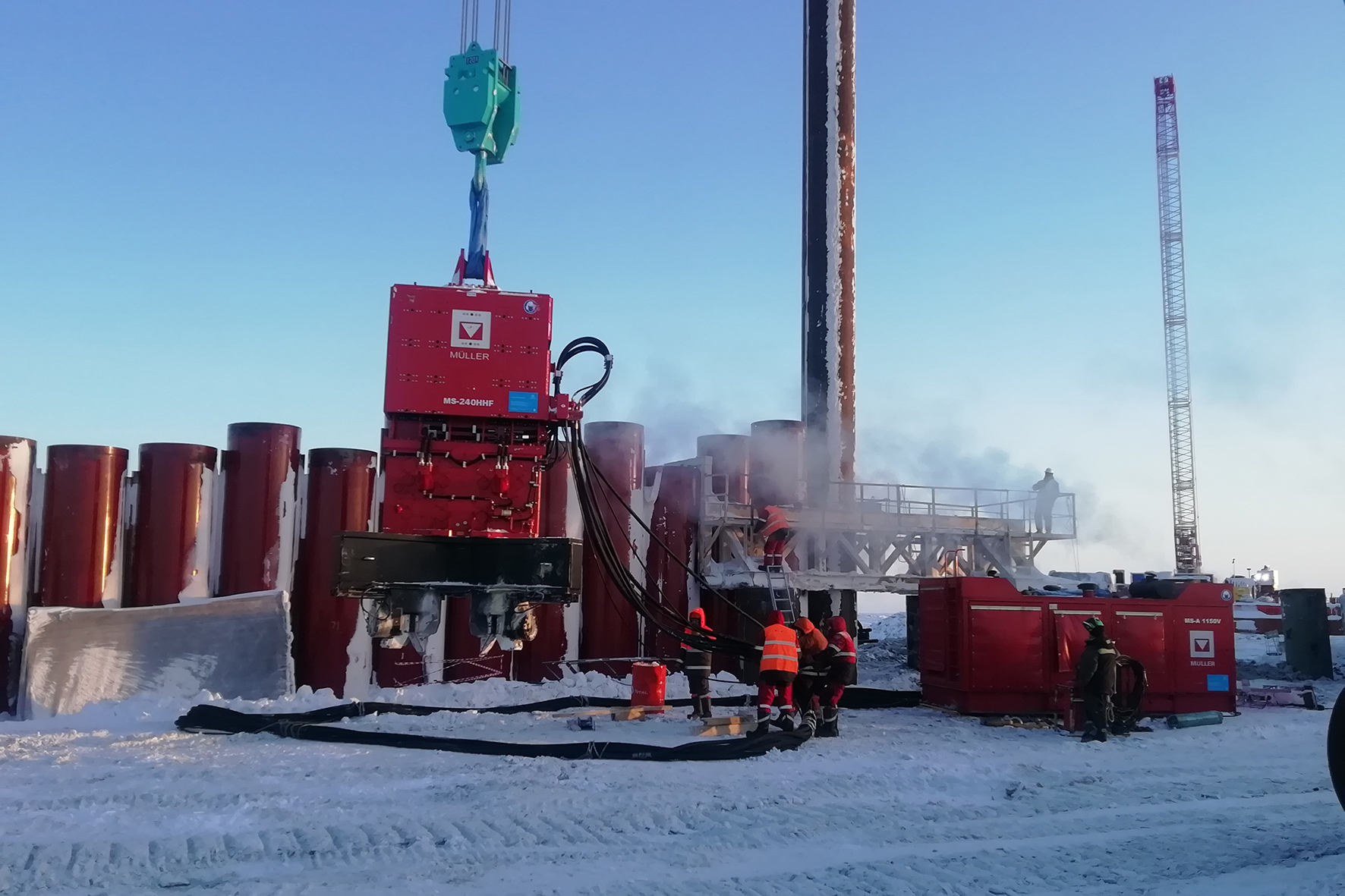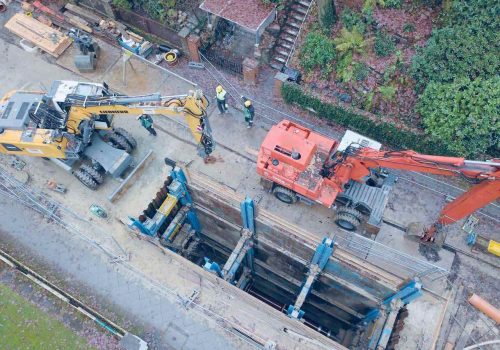BROUGHT IN ICE-COLD.
Machine technology from terra infrastructure in use for the port in Western Siberia
The rising global demand for energy is raising hopes for liquefied natural gas (LNG), which has been significantly reduced in volume, as a future-oriented energy source. As part of the Arctic LNG 2 project, an LNG production facility is to be built on the Gydan Peninsula in northern Western Siberia. The Arctic LNG 2 plant intends to use the resources of the Salmanovskoye field, a structure containing 1.98 trillion m³ of natural gas and 105 million tonnes of liquid hydrocarbons. For this purpose, three technological lines for the production of liquefied natural gas with a total capacity of 19.8 million tonnes of LNG per year are being built at the Utrenny terminal. For the terminal work under extreme climatic conditions, terra infrastructure GmbH supplied powerful vibration technology.
High-performance vibratory pile drivers
Two MS-210 HHF and two MS-240 HHF vibratory units were used for driving steel pipes into the permafrost soil - they had diameters of 1.42 and 2.52 metres respectively with a pipe wall thickness of between 14 and 28 millimetres. Both are among the most powerful vibratory pile drivers currently available on the market. Units in the HHF series are ideal for use in changing geological conditions and are adjustable in steps. By increasing the static moment with interchangeable additional weights, different vibration amplitudes and frequencies can be adjusted to the soil profiles with the same centrifugal force. In order to supply the müller vibration units with energy, drive units are required in which diesel engines drive hydraulic pumps inside a sound-insulated housing. In Utrenny, four MS-1150 V power units were used, each equipped with the optionally available winter package.
In view of the arctic temperatures, this was particularly important because the preheating devices for the hydraulic oil and the cooling water of the diesel engine contained in the package protect the system components and thus increase their operational readiness and service life. The volume flow was passed on to the vibratory pile drivers via hose lines, each 120 metres long. In this way, it was possible to drive steel pipes into the ground at depths of between 25 and 60 metres. Here, four MS-U 180 GP clamping devices - mounted on an MS-KX 320 console - ensured a vibration-free connection of the pipes to the vibratory unit.
The construction process in Utrenny is taking place in a total of seven stages. From 2023 onwards, the LNG plant is to be commissioned step by step.





you might also be interested in
-

Offshore work in the Juri Korchagin oil field in Russia
The Juri Korchagin oil field is located in the northern part of the Caspian Sea. There, the Lukoil company wanted to build an ice-resistant drilling platform consisting of two blocks.
To the post -

Safety in a double pack in Berlin-Frohnau
It was an excavation support of record-breaking dimensions - all construction partners involved in the sewer rehabilitation project in Berlin-Frohnau agreed on this.
To the post -

Parking Garage Retaining Wall
As part of this construction measure, a retaining wall made of anchored LARSSEN steel sheet pile profiles was provided, as this would have been a...
To the post